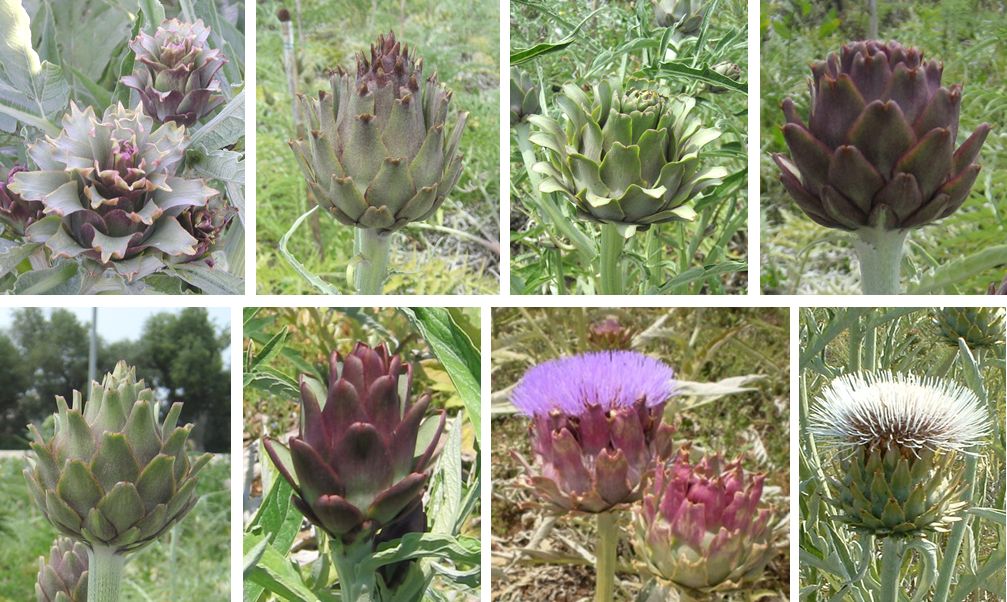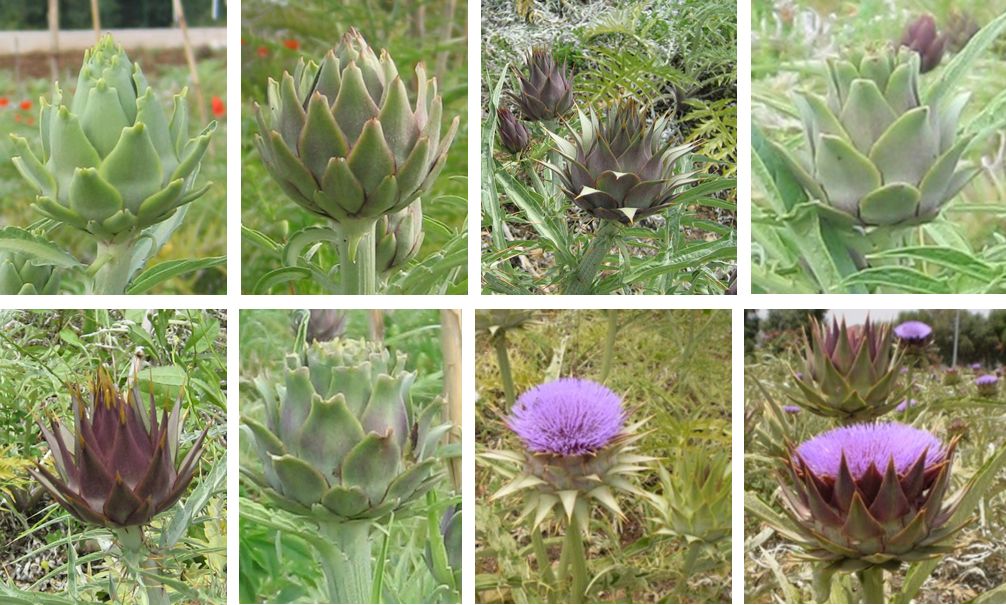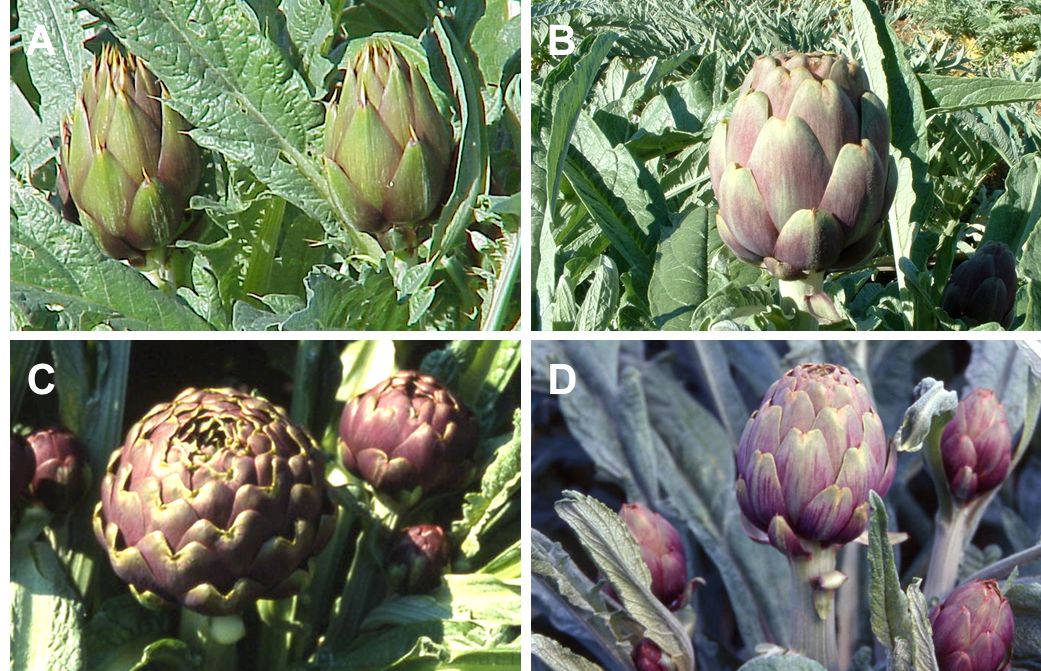Cynara cardunculus L. belongs to the Asteraceae family (formerly Compositae) and is native to the Mediterranean Basin. It includes three botanical taxa: the globe artichoke (var. scolymus), the cultivated cardoon (var. altilis) and the wild cardoon (var. sylvestris).

Cynara cardunculus botanical taxa: A var. scolymus, B var. altilis, C var. sylvestris
Being a cross-pollinated diploid species (2n = 2x = 34) with proterandrous and asynchronous sexual maturity, C. cardunculus harbours a highly heterozygous genetic background. Wild cardoon is the ancestor of both cultivated C. cardunculus forms, which evolved independently under the influence of distinct anthropogenic selection criteria: globe artichoke for its immature inflorescences (capitula or heads), consumed either as fresh or industrial-processed product, while cardoon for its fleshy leaves. The three subspecies remain fully cross-compatible with one another, and their F1 hybrids are fertile.

Examples of head morphological variation in the F1 segregant progeny “globe artichoke x cultivated cardoon”

Examples of head morphological variation in the F1 segregant progeny “globe artichoke x wild cardoon”
Italy has been claimed as the centre of globe artichoke domestication, which occurred about 1st century, and it harbours the richest cultivated primary gene-pool well-fitting local climatic conditions and consumers’ preferences. Being grown on a regional scale, cultivated globe artichoke germplasm accounts for more than 120 varietal types, which can be classified on the basis of the harvest time (early or late) or capitulum traits, like dimension, shape, presence/absence of spines, pigmentation of the outer bracts, defining four main varietal types: “Spinosi”, “Catanesi”, “Romaneschi” and “Violetti”.

The four main varietal types: A Spinosi, B Catanesi, C Romaneschi, D Violetti
In recent years some seed (achenes) propagated varieties are being diffusing in cultivation, but vegetative propagation, by means of basal and lateral offshoots (either semi-dormant or actively growing), or stump pieces, has been adopted for centuries, and it is still largely prevalent in most of the varietal types and local landraces.
